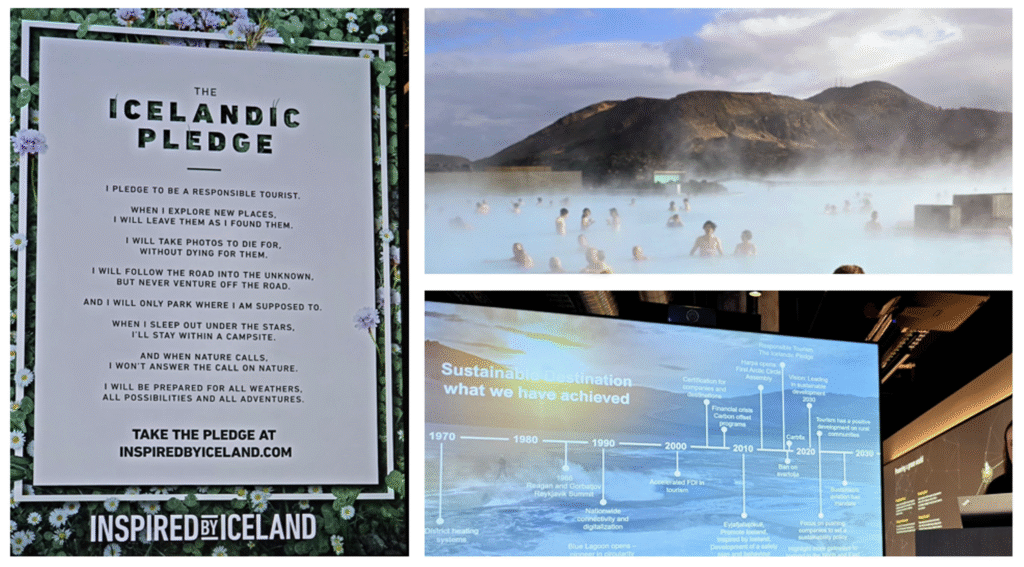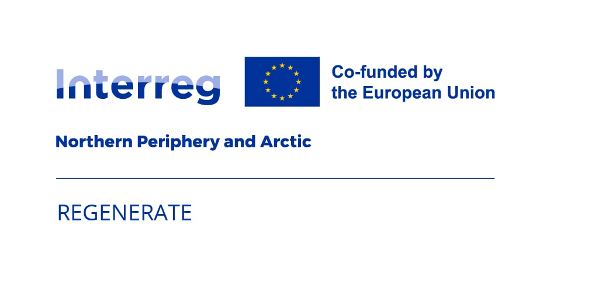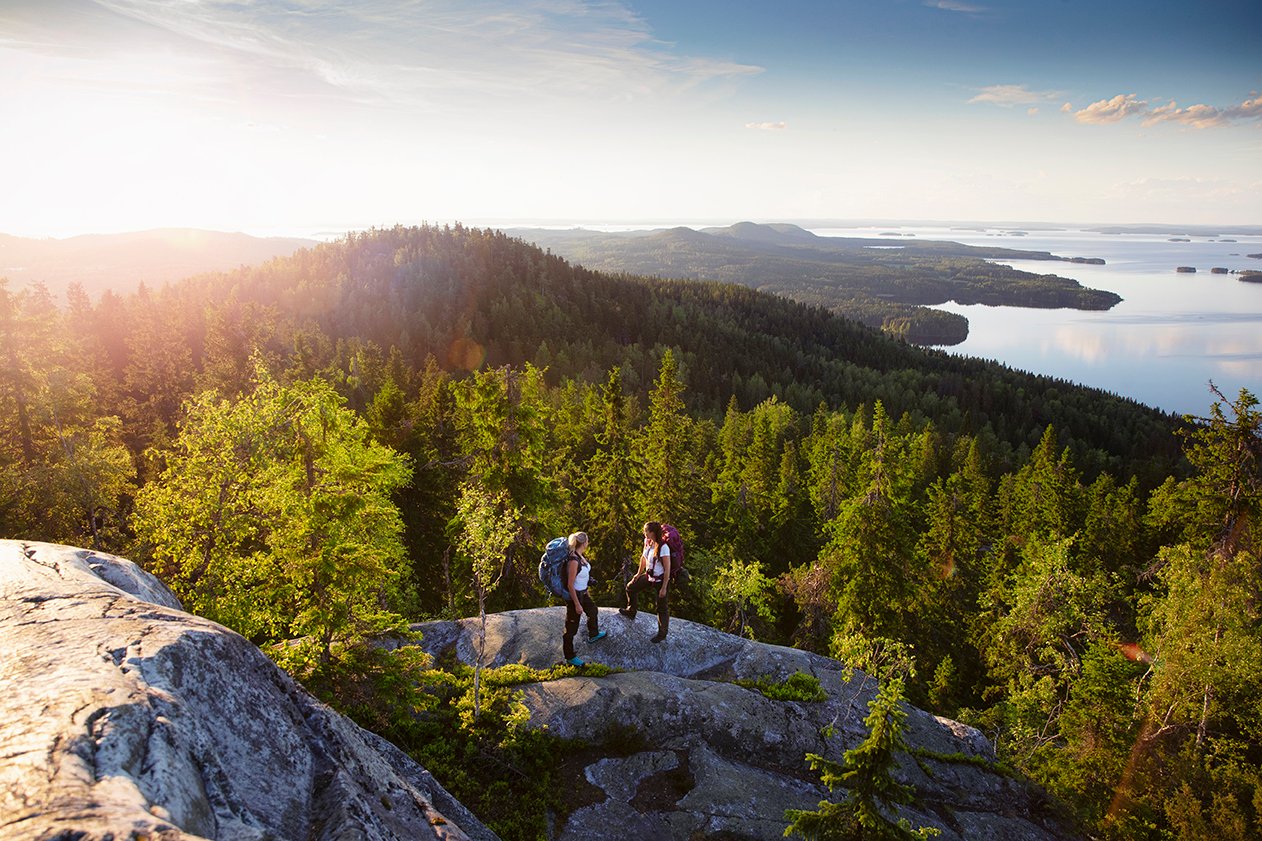Sixteen new projects were approved by the Interreg Northern Periphery and Arctic (NPA) Monitoring Committee at the end of the year 2024 (Interreg NPA 2025). REGENERATE – Regenerative Tourism in the Northern Periphery and Arctic for building resilient communities and preserving the unique heritage of the region, was among approved projects under Priority 3 – Cooperation Opportunities. The priority funds projects that aim to strengthen cooperation skills and foster collaboration across communities and small organisations (Interreg NPA 2025). Eastern Finland region, where Karelia University of Applied Sciences is located, is one of the regions involved with the REGENERATE project implementation. The project officially started actions in April 2025 and has been running for a little over half a year.
Building a sustainable and resilient future
The NPA is a fragile region, vulnerable to the effects of growing tourism. Tourism can have serious environmental impacts (European Union 2025, Nordregio 2025, Silvennoinen et al. 2021) why a shift in the sector is needed. Regenerative tourism is a sustainable approach to travel that aims to restore and improve the places people visit.

Regenerative tourism goes beyond just minimizing negative impacts. It strives to create positive outcomes for the destinations and its residents. However, the major actors in tackling this challenge are both public and private sector, whose cooperation is essential for conscious tourism sector development. The challenge lies in effectively introducing, enhancing capacity and integrating regenerative practices.
The REGENERATE project aims to establish capacity building, strategic and marketing solutions to adopt practices that contribute to the regeneration of natural, economic and cultural resources, setting a precedent for a sustainable and resilient future in the NPA and beyond.
Regenerative models and building a network of regenerative tourism
The REGENERATE project will focus on advancing practices that contribute to the regeneration of natural, economic and cultural resources. Key action areas will include:
- encouraging uptake of regenerative tourism principles and operating models across the NPA area; that strengthens both the sustainability of local communities and natural assets of tourism destinations.
- not only increasing awareness and promoting the introduction of operating models that limit environmental harm in tourism destinations. Instead, reimagining and reconstructing models that are regenerative in design; promote also restoration, strengthen regional culture heritage and strengthen the social resources of local communities.
- forming regional / national network of actors committed to the principles of regenerative tourism. Operations by the network are supported by the regenerative tourism model developed in the project.
The goal is that the regenerative models developed in the project will provide public administration actors with tools to start a process that will ultimately result in building an operational framework for a regenerative tourism system (ecosystem) that relies on local resources. The local business models will on the other hand support local actors in the implementation of a model of innovative tourism and in organizing the operational framework, while at the same time contributing to ensuring that as much of the tourism revenue as possible remains in the local economy.
Kick-starting the collaboration
Activities in REGENERATE project have been ongoing little over half a year. This was kick-started by a partner meeting in Iceland in spring this year, where partners discussed ways to approach the activities. Partners also visited tourism operators such as Business Iceland, Icelandic Tourism Cluster Gróska, and a local business, Blue Lagoon Iceland. The visits gave enriching experiences about state of Iceland’s tourism – opportunities, challenges, even resilience by innovative examples how tourism strategies, incentives and policies are continuously updated and intertwined to keep up with developments.

Key events during the six-month period have been:
- project start-up bureaucracy and partnership agreement
- fruitful physical kick-off meeting in Iceland, discussing approaches to activities and setting timelines for the first year
- drafting the project communication plan and distribution of related tasks over various phases of the project
- carrying out stakeholder mapping and expert interviews in own regions
- implementing regional roundtable discussions as basis of next developments
Partners also started conducting research on tourism state of art in own regions, and kick-started discussions on pilots and regenerative tourism hubs to be implemented and developed by the project respectively. The results of these activities form a foundation for the next development phase of the project.
Partners across the Arctic
The project has altogether 20 partners – 6 main partners, and 14 associated partners that strengthen the partnership. The main partners are Visit Reykjanes (Iceland), Karelia University of Applied Sciences (Finland), GeoCamp Iceland (Iceland), Olemisen Balanssia Ry (Finland), Gold of Lapland economic association (Sweden), and Cuilcagh Lakelands UNESCO Global Geopark (Ireland). The project has received funding from the EU Interreg Northern Periphery and Arctic Programme. To follow the project developments and results, visit the project website.
Authors:
Daisy Silvennoinen, Project specialist, Karelia University of Applied Sciences
Keijo Koskinen, Lecturer, Karelia University of Applied Sciences
References:
Atladóttir, Ó. 2024. Regenerative Tourism – a Vision for the Future of Nordic Tourism. PowerPoint presentation. https://www.interreg-npa.eu/media/vmlhcsst/%C3%B3loef-%C3%BDrr-atlad%C3%B3ttir-regenerative-tourism-perspectives-iceland.pdf
European Union. 2025. EU Tourism Platform. Unbalanced Tourism Growth in Europe: Understanding Pressures, Impacts and Sustainable Pathways. https://transition-pathways.europa.eu/tourism/articles/unbalanced-tourism-growth-europe-understanding-pressures-impacts-and-sustainable
Interreg NPA. 2025. 5th Call for projects – Sixteen new projects were approved on 11th December by the Interreg NPA Monitoring Committee. https://www.interreg-npa.eu/apply-for-funding/calls-for-projects/5th-call-for-main-projects/
Nordregio. 2025. Case 2. Norway – Lofoten, 30,000 to 1 – Locals and nature outnumbered. https://pub.nordregio.org/r-2025-5-rethinking-tourisms-impact-on-nordic-communities/case-2-norway-lofoten-30-000-to-1-locals-and-nature-outnumbered.html
Silvennoinen, D., Hokkanen, T., Lehtovaara, V. (2021). Benchmarking measures for handling potential visitor pressures in protected areas; A case of North Karelia Biosphere Reserve. https://urn.fi/URN:ISBN:978-952-314-909-0.


